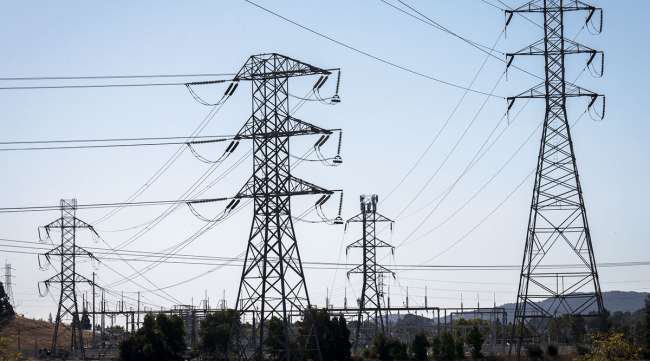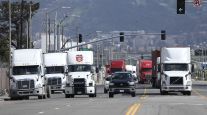Bloomberg News
Massive California Blackout Could Prevent Fires but at Big Cost

[Stay on top of transportation news: Get TTNews in your inbox.]
Even a brief blackout can be costly. Now California faces the experiment of finding what out happens economically when a modern metropolitan area goes without power — on purpose — for what could be days.
PG&E Corp., the state’s largest utility, began shutting off power Oct. 9 to an estimated 2.7 million people in Northern California to prevent fires during a windstorm. While the high winds are forecast to subside by late Thursday, the company will undertake extensive inspections of its equipment before turning electricity back on, meaning outages could persist into next week.
With large portions of the San Francisco Bay area set to be affected — including cities such as Oakland, Berkeley and San Jose — the shutdowns are a test for a densely populated region that’s the hub of the U.S. technology industry. Though San Francisco itself is expected to be spared from the shutoffs, as are many of the major tech campuses of Silicon Valley, a prolonged outage threatens to roil the region’s economy by disrupting workers and everyday life.
Blackouts lasting hours or a single day can close offices and schools, and prompt runs on grocery stores. At five days, cupboards start running bare and diesel for backup generators can be harder to find, since many gas stations won’t have power. Workers who make it to the office for a day or two of outages may face strains after extended power loss at home.
“If you lose power for five hours, you may have to throw out some milk,” said Michael Wara, director of the Climate and Energy Policy Program at Stanford University. “If you lose power for five days, you need to throw anything that’s perishable away, and you are likely eating out of a can.”
Wara estimated PG&E’s blackout could cost $2.6 billion if it lasts two days, using a planning tool developed by Lawrence Berkeley National Laboratory. Two of the researchers who developed that tool, however, cautioned that it’s designed to calculate the impact of much shorter blackouts — less than 24 hours. The effects of a five-day outage are harder to gauge, they said.
Big businesses that need an uninterrupted flow of power typically set up redundant systems to ensure it, while smaller businesses may suffer, said Peter Larsen, a research scientist at Lawrence Berkeley National Laboratory.
“This is the type of thing that can cause businesses to fail, if they’re facing other problems,” he said.
After two years of deadly fires blamed on its equipment, PG&E has repeatedly warned customers it might take such a step. Many businesses and government agencies have set up contingency plans as a result. But those have their own costs.
The utility that supplies water to much of the East Bay, for example, has rented backup generators for its pumping stations and plants, at a cost of $400,000 for the season. But the fuel to run those generators could cost $75,000 per outage, said Andrea Pook, spokeswoman for the East Bay Municipal Utility District. And the district is still asking customers to conserve water, limiting the need for the generators.
“As an insurance policy, we’re asking customers to be mindful,” she said.
PG&E’s warnings gave residents and businesses time to prepare, said Joe Eto, a Lawrence Berkeley National Laboratory staff scientist. Many companies, he said, can now have employees work remotely, conducting business through the cloud if needed. And if their own homes go dark, there are other places they can take their laptops to charge up and work.
“Never underestimate the resourcefulness of people under stress,” he said.
Want more news? Listen to today's daily briefing:




